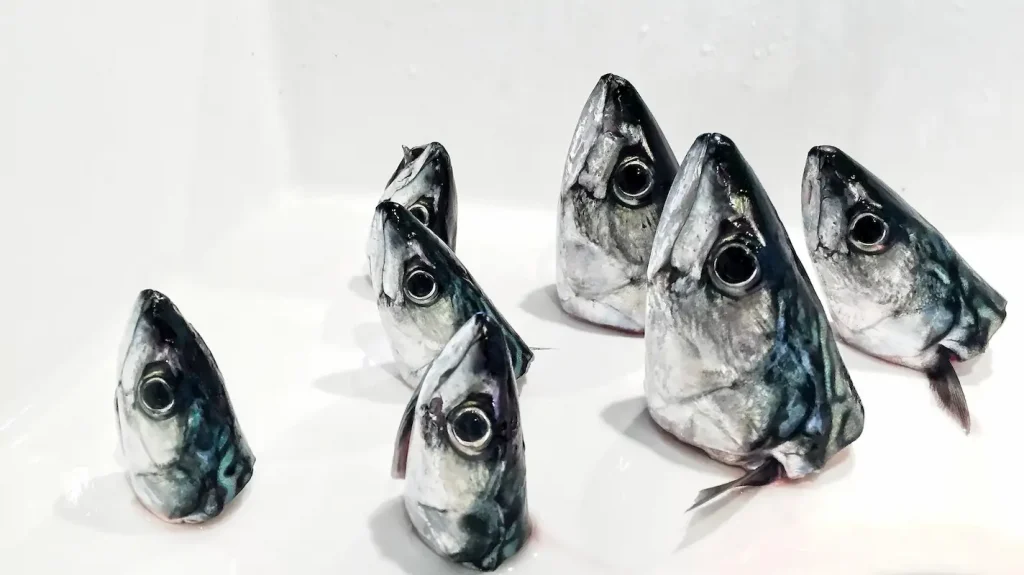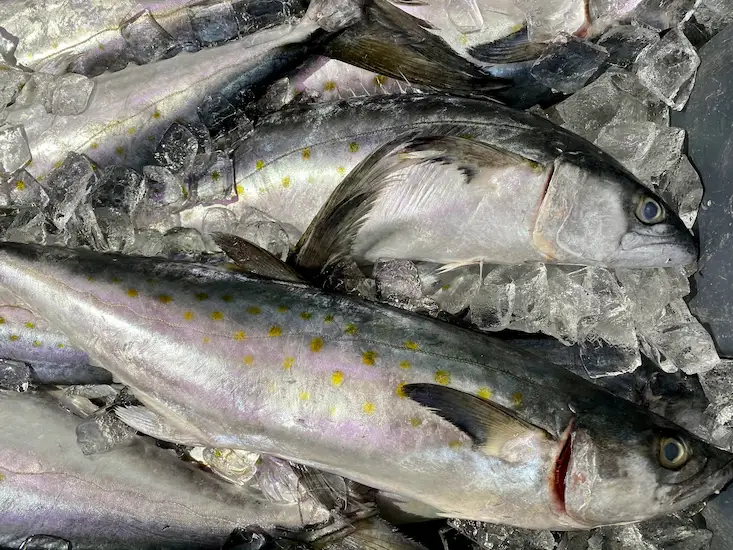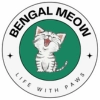Can Bengal Cats Eat Tuna? Complete Guideline
Bengal cats, with their captivating leopard-like spots and lively personalities, have gained immense popularity among cat enthusiasts. These agile cats are known not only for their distinctive appearance but also for their playful behavior. However, when it comes to their dietary preferences, many Bengal cat owners find themselves pondering a crucial question: “Can Bengal cats eat tuna?” In this comprehensive exploration, we’ll unravel the intricacies of feeding tuna to Bengal cats, shedding light on their unique dietary needs and the pros and cons of this tempting seafood.
Bengal Cats’ Unique Dietary Needs
Before delving into the tuna debate, it’s imperative to grasp the distinctive dietary requirements of Bengal cats. These mesmerizing creatures trace their lineage to the Asian leopard cat, a wild feline found in the forests of Asia. Their wild ancestors were obligate carnivores, creatures whose bodies evolved to thrive on a diet primarily composed of animal protein. This evolutionary heritage highlights the fundamental importance of providing Bengal cats with a diet rich in high-quality animal protein.
In their natural habitat, Bengal cats’ ancestors would stealthily stalk and hunt small prey, indulging in a menu that included birds, rodents, and other diminutive mammals. This diet not only sustained them but also provided essential nutrients like taurine, a vital element for feline health.
People also like Unlocking the Secrets Behind Why Bengal Cats Meow So Much
Tuna: The Irresistible Temptation
Tuna has long been a favored choice among cat owners as a special treat or occasional indulgence for their feline companions. Its potent aroma and savory flavor can quickly captivate a cat’s senses, making it a preferred option for rewarding or pampering them. However, it’s crucial to exercise caution and informed decision-making when integrating tuna into a Bengal cat’s diet.
The Magnetic Allure of Tuna’s Nutritional Benefits
Tuna boasts several nutritional advantages that can make it an alluring option for both cats and their owners:
- Abundant Protein Content: Tuna is renowned for its protein-rich profile, offering the essential building blocks necessary for muscle maintenance and overall health in Bengal cats.
- Omega-3 Fatty Acids: Tuna serves as a valuable source of omega-3 fatty acids, known to promote healthy skin and a lustrous coat in cats. These fatty acids also contribute to overall well-being.
- Palatability: The robust scent and flavor of tuna are undeniably appealing to most cats, rendering it an ideal choice for enticing finicky eaters to consume necessary medications or supplements.
While these attributes underscore the temptation of tuna, it’s crucial to balance them against the potential drawbacks.
The Caveats of Tuna for Bengal Cats
Concerns About Mercury Content
One of the most prominent concerns linked to tuna consumption revolves around the presence of mercury. Mercury is a heavy metal that accumulates in the tissues of fish, especially in larger predatory species like tuna. Bengal cats, like all cats, are susceptible to mercury poisoning if they consume excessive quantities of tuna. Mercury poisoning can lead to a range of severe health problems, including neurological issues.
Allergic Reactions
Just as humans can develop allergies, cats can experience allergic reactions to specific foods, and tuna is a common allergen. While not every Bengal cat will encounter adverse reactions, some may develop symptoms such as skin irritations, digestive disturbances, or respiratory issues after consuming tuna. Therefore, it’s essential to closely monitor your Bengal cat for any signs of allergies if you decide to include tuna in their diet.

The Risk of Nutritional Imbalance
Feeding tuna as the exclusive or predominant component of your Bengal cat’s diet can lead to a nutritional imbalance. While tuna provides valuable protein and omega-3 fatty acids, it lacks several other essential nutrients that are crucial for your cat’s well-being. To ensure a balanced diet, it’s vital to diversify protein sources and collaborate with your veterinarian to establish a dietary plan that aligns with your Bengal cat’s specific nutritional requirements.
Exploring Safer and Healthier Alternatives
If you’re concerned about the potential pitfalls of feeding tuna to your Bengal cat, rest assured that numerous alternative options are available to meet their dietary needs and preferences.
Opting for Other Meat Sources
Bengal cats can thrive on a variety of lean meats, including chicken, turkey, and lean beef. These meats are not only safe but also provide a broad spectrum of essential nutrients without the mercury-related concerns associated with tuna.
Prioritizing High-Quality Commercial Cat Food
Reputable commercial cat food brands offer meticulously crafted formulations designed to meet the unique nutritional demands of cats, including Bengal cats. When selecting cat food, prioritize brands that list real meat as the primary ingredient and provide a well-balanced nutritional profile.
The Significance of Moderation
Should you decide to include tuna in your Bengal cat’s diet, moderation becomes the cornerstone of ensuring their safety and well-being. While tuna can serve as an occasional treat or dietary supplement, it should not assume the role of a regular or predominant component of their meals.
The Importance of Moderation in Tuna Feeding
Occasional servings of tuna can indeed be a delightful indulgence for your Bengal cat. However, it’s vital to limit its frequency and quantity to mitigate potential risks associated with mercury content and dietary imbalances.
Seeking Expert Advice for Portion Control
To determine the appropriate portion size of tuna for your Bengal cat, seek guidance from your veterinarian. They can take into account factors such as your cat’s age, weight, activity level, and overall health to provide tailored recommendations for a safe and enjoyable tuna experience.
Safeguarding the Preparation of Tuna
When offering tuna to your Bengal cat, it’s crucial to ensure that it is prepared safely to minimize potential risks.
Adhering to Safe Tuna Preparation Methods
- Opt for Plain, Cooked Tuna: Choose plain, cooked tuna without added spices, sauces, or flavorings. Canned tuna in water is a suitable choice, but steer clear of varieties packed in oil, as the added fat content may prove excessive for your cat.
- Prioritize Freshness: If you opt for fresh tuna, ensure that it is properly cooked to eliminate any potential pathogens that could harm your cat.
The Importance of Avoiding Harmful Additives
Exercise caution when selecting tuna products and avoid those that contain added salt or artificial preservatives. These additives can have detrimental effects on your cat’s health, and it’s best to opt for plain and natural tuna options.
Identifying Signs of Allergies or Dietary Issues
Vigilance is paramount when it comes to monitoring your Bengal cat’s reaction to their diet, especially if tuna is involved.
People also like 12 Expert Techniques for Training Your Bengal Cat
Recognizing Adverse Reactions in Cats
Stay attentive to your cat’s behavior and physical condition following tuna consumption. Be on the lookout for symptoms such as:
- Vomiting
- Diarrhea
- Skin Problems
- Difficulty Breathing

If you observe any of these issues after your cat consumes tuna, discontinue tuna immediately and seek guidance from your veterinarian.
Knowing When to Consult a Veterinarian
In cases of severe or persistent problems related to your cat’s diet, it’s crucial to consult with your veterinarian promptly. They can conduct thorough assessments, provide appropriate treatments, and offer guidance on dietary adjustments as needed.
Transitioning Diets Smoothly
Should you choose to reduce or eliminate tuna from your Bengal cat’s diet due to concerns or personal preferences, executing a smooth transition is paramount.
Steps to Transition from Tuna to Other Foods
Transitioning away from a tuna-heavy diet can be achieved by gradually introducing new protein sources while decreasing the amount of tuna offered. This gradual shift minimizes the risk of digestive upset and ensures that your cat becomes accustomed to the new dietary choices.
The Role of Patience in the Transition Process
Cats are renowned for their selective eating habits, so it’s essential to exercise patience during the transition period. Allow your Bengal cat time to adjust to the new foods and flavors, and provide encouragement and positive reinforcement as they explore their updated menu.
Crafting Homemade Cat Food
For some Bengal cat owners, the prospect of preparing homemade cat food can be appealing, as it offers greater control over ingredients. However, it’s imperative to do so with care and awareness.
Exploring DIY Cat Food Options
Homemade cat food recipes are available that incorporate vet-approved ingredients. These recipes typically feature lean meats, essential nutrients, and guidelines for creating a balanced and nutritious meal for your Bengal cat.
The Crucial Adherence to Safety Guidelines
The preparation of homemade cat food demands meticulous attention to detail to ensure that your Bengal cat receives all the necessary nutrients. Always consult your veterinarian for guidance on homemade diets, and closely follow recommended recipes to maintain a balanced and healthful diet for your feline companion.
Top Tips for the Health of Your Bengal Cat
Beyond dietary considerations, several other factors play a pivotal role in ensuring the well-being of your Bengal cat.
Emphasizing Proper Hydration
Guarantee that your cat has access to clean, fresh water at all times. Adequate hydration is not only crucial for their overall health but also supports the proper functioning of their urinary system.
Scheduling Regular Veterinary Check-Ups
Regular check-ups with your veterinarian are essential for monitoring your Bengal cat’s health and addressing any concerns promptly. These routine visits are instrumental in preventative care and early detection of health issues.
Reader Stories and Experiences
To provide a more profound understanding of Bengal cats and their dietary preferences, let’s explore real-life experiences and stories shared by devoted cat owners.
Sarah’s Success Story: Sarah recounts her journey of transitioning her Bengal cat from a primarily tuna-based diet to one that offers more variety. “The transformation in my cat’s appearance and energy levels was astonishing,” she shares. “His coat became softer and shinier, and he’s much more playful and active now.”

Mike’s Allergy Alert: Mike candidly shares a cautionary tale about discovering his cat’s allergy to tuna. “For the longest time, my Bengal cat relished tuna, but one day, he developed skin issues,” Mike recalls. “A swift visit to the vet revealed the allergy, and we had to make dietary adjustments. Thankfully, he’s doing much better now.”
These personal anecdotes underscore the importance of paying attention to your Bengal cat’s dietary needs and any potential reactions to specific foods. It’s a testament to the dedication that cat owners have in ensuring their pets’ well-being and happiness.
Final Thoughts
In conclusion, the question of whether Bengal cats can eat tuna entails a nuanced answer. While tuna can be included in a Bengal cat’s diet in moderation, it should not constitute their primary or exclusive source of nutrition. The key to maintaining your Bengal cat’s health and contentment lies in providing a well-balanced diet that aligns with their obligate carnivore status.
This encompasses the incorporation of a diverse array of protein sources and close collaboration with your veterinarian to establish a dietary plan tailored to your Bengal cat’s specific nutritional needs. By staying informed about the advantages and potential pitfalls of feeding tuna, safely preparing it, and remaining vigilant for potential allergies or dietary issues, you can ensure that your Bengal cat enjoys a wholesome and nutritious diet that promotes their vitality and happiness.
FAQs about Can Bengal cats eat tuna?
Is it safe to feed my Bengal cat canned tuna?
Feeding canned tuna in moderation is generally safe, but it’s crucial to consider potential mercury content and nutritional imbalances. Consult your veterinarian for recommendations on portion sizes.
Can Bengal cats be allergic to tuna?
es, some Bengal cats can develop allergies to tuna. Monitor your cat for any signs of adverse reactions and consult with your veterinarian if needed.
What other meats can I feed my Bengal cat?
Lean meats like chicken, turkey, and lean beef are excellent alternatives to tuna, providing a diverse range of nutrients.
How do I transition my Bengal cat from a tuna-heavy diet to other foods?
Transition gradually by introducing new foods while decreasing the amount of tuna. Be patient during this process, as cats can be selective eaters.
Are there any homemade cat food recipes suitable for Bengal cats?
Yes, there are safe homemade cat food recipes that incorporate vet-approved ingredients. Always seek guidance from your veterinarian when preparing homemade diets to ensure they meet your Bengal cat’s nutritional needs.





